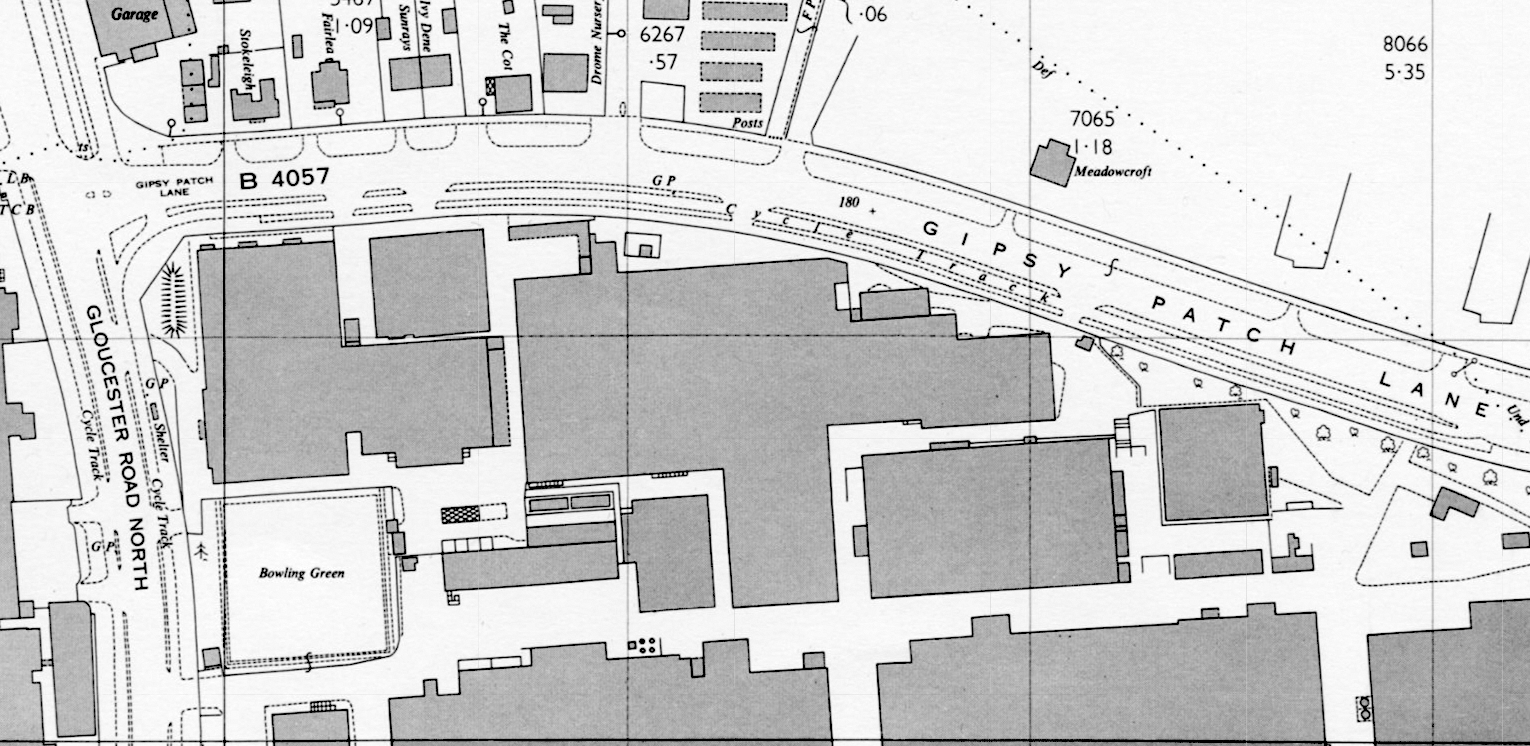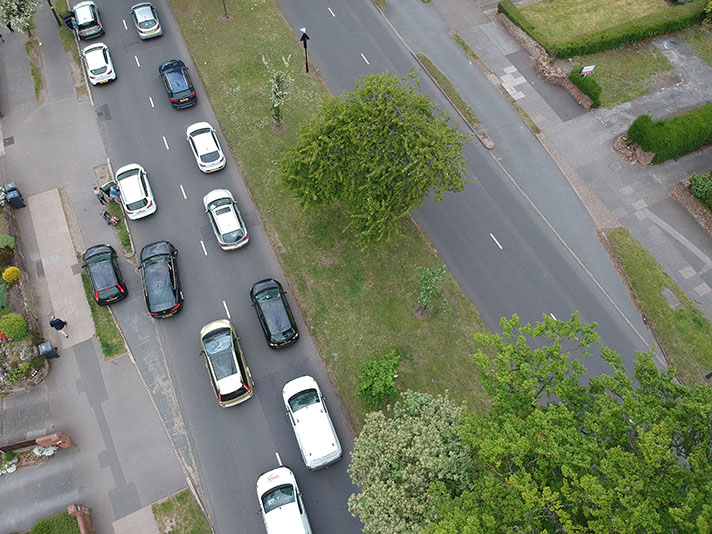
Large scale OS map of Gloucester Road North and Gipsy Patch Lane marks both roads as having cycle tracks, and it appears there’s a rare-for-the-period protected junction.
Gloucester Road North (also sometimes described as Gloucester North Road) was straightened and widened after 1937, and equipped with footways and cycle tracks at the same time.
“The Ministry had now intimated that they would proceed with the widening of the existing trunk road provided the proposal was reduced in cost to provide for an 80-foot road only, with a 30-foot central carriageway and two cycle tracks and footpaths,” reported Gloucestershire’s county surveyor in a highways committee meeting in September 1937.
Large-scale heritage mapping on Bristol City council’s website shows that there was a period kerb-separated cycle track each side of the road, from the rectory connected to St. Peter’s church along Gloucester Road North. The track linked with a short one on the south side of Gipsy Patch Lane. The track ended just after Taurus Road, which did not exist in the 1930s. If the OS map above is correct, and there was some form of protection for cyclists turning left from Gipsy Patch Lane on to Gloucester Road North, then this would be an example of a protected junction, unusual for the period.
It’s clear that the width of both Gloucester Road North and Gipsy Patch Lane were the same in the 1930s as today but a later reconfiguration has wholly obliterated the 1930s cycle track. An inferior shared-use path has been reinstated on Gloucester Road North.
The reconfiguration of Gloucester North Road/Gloucester North Road — including a flyover on the Gipsy Patch Lane junction — took place in the 1970s.
The cycle tracks had been good enough in 1965 for Mrs Barbara Castle — the then Minister of Transport — to suggest they should become compulsory for cyclists to use. This was subject to a compulsion trial for the cycle tracks on the Oxford eastern bypass. It’s unknown — but unlikely — that any such order was imposed at Filton.







